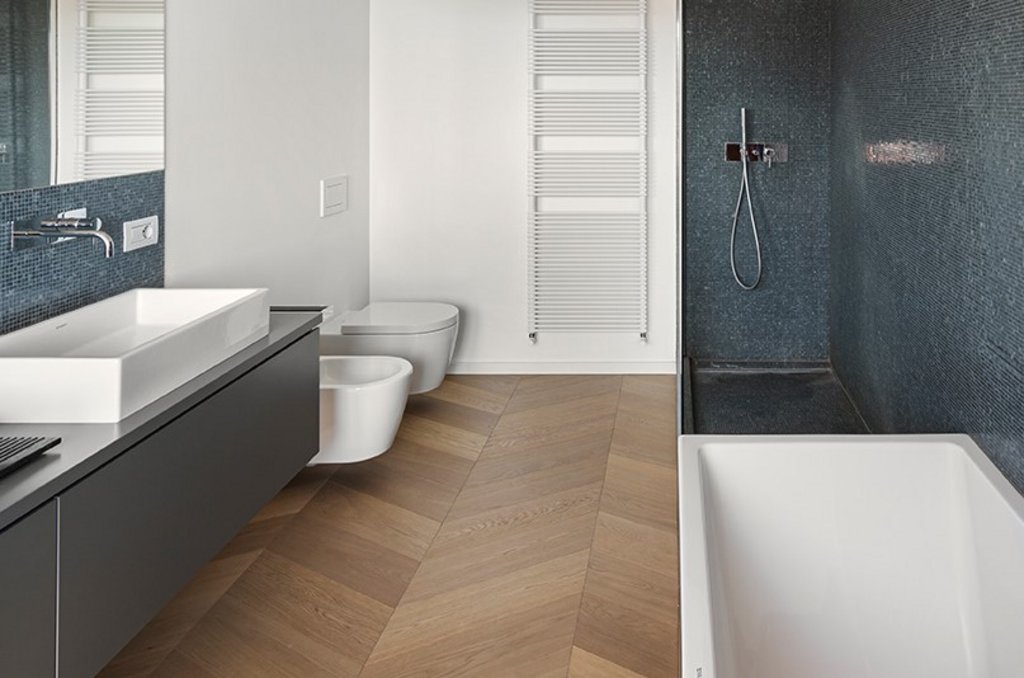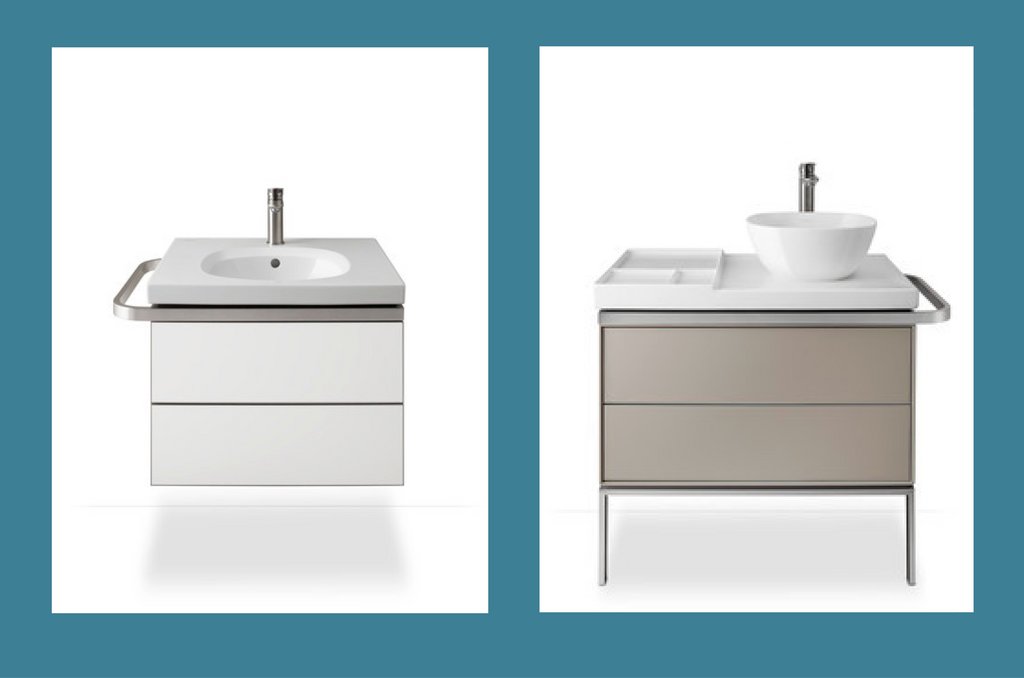Holistic bathroom planning: 10 steps to a Private Spa

In the bathroom wellness becomes culture, and the private spa gives
concrete form to that culture. The desire to enjoy the pleasures of
water, a certain aesthetic and the cult of the body culminates in a
sophisticated room concept.
Photo: Karsten Jipp, VDS
A growing number of people
with plans to build or renovate their home are dreaming of a bathroom that can
do more – a place where they can switch off, relax and be active. With the
experiences of the corona pandemic, the outside world seems more uncertain than
ever before – and the private spa concept is becoming all the more valuable for
individual wellbeing. As a result, the planning and implementation of a private
spa are among the most stable segments of the building services and fittings
business. And as the champions league of holistic bathroom planning it is one
of the most important areas of expertise for interior designers and bathroom planners.
But what exactly is meant by a private spa? Which components does it take to
create one? Insights and learnings from 12 years of the private spa.
The private spa is a bathroom concept that turns routines into rituals
and water into an experience. There is no other room that brings together the desire
for cosiness and the fun of styling with the need for wellness and the passion
for fitness. The latter is becoming an increasingly important factor for
private spa fans. And the wellness effect is dependent not just on elements
like a rainfall shower, a sauna or premium furnishings but on soft factors like
ambience, warmth and sensuous surroundings too. Whereas physical wellbeing used
to be the top priority, bathroom users are now attaching great importance to an
aesthetic that promotes mindfulness. But the overall picture is only really
complete when the interior design concept tells a story: a natural ambience, an
elegant salon, a cool loft, an exotic world, a country idyll – imagination is
the magic ingredient.
As bathroom architecture evolves into lifestyle space and the bathroom’s enhanced and extended functions turn it into a private spa, the classic bathroom is undergoing a thorough update. The idea of what makes a modern bathroom has changed fundamentally in recent years: snug features, products designed for convenience and comfort and more floor space are increasing both the amount and the quality of the time we spend in the bathroom. Under the impression of the pandemic, the need for a comfortable bathroom to retreat to has become even stronger: “There has been a significant increase in demand for holistic bathroom planning and the refurbishment of older bathrooms since the pandemic hit in March 2020,” says Jens J. Wischmann, managing director of the German Bathroom Sector Association (Vereinigung Deutsche Sanitärwirtschaft e.V. [VDS]). “As a safe haven that’s a pleasure to spend time in and features extra-special products like a shower toilet or a freestanding tub, a private spa is right at the top of many home owners’ wishlist.”
First introduced by Pop up my Bathroom in 2009 for the ISH, the term
private spa has been used for more than 10 years now to signify individual
concepts that take a holistic approach to bathroom design with the goal of
creating a place for experiences. The following factors are key to the success
of a holistically planned private spa:
1. High design quality: the colour and materials concept
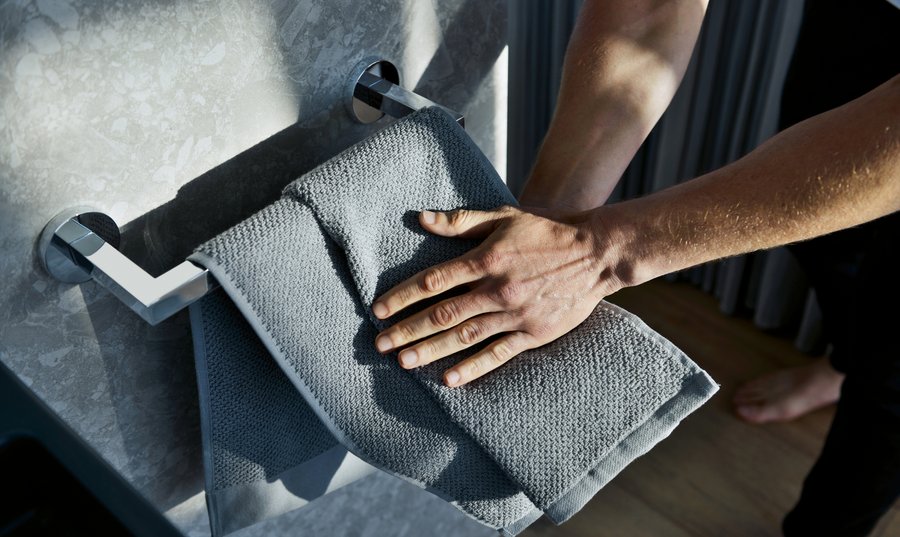
Colour and materials concept: to ensure high design quality, a private
spa should stick to a consistent colour and materials concept that’s
coordinated with the walls, flooring and sanitaryware.
Photo: Keuco
Even though there’s no one right answer when it comes to questions of
taste, top bathroom designers, planners and architects nevertheless follow a
fundamental design code: to ensure high design quality, a private spa should
stick to a consistent colour and materials concept that’s coordinated with the
walls, flooring and sanitaryware. That sounds easier than it is, because no two
shades of “white” are the same, and it really is essential to ensure all the
colours and materials harmonise – even under varying light conditions. The
colour concept of a private spa should be surprising, supportive of users’
early-morning routines and suitable for transforming the bathroom into a
feel-good space in the evening. Collages of the colours and materials are a
useful tool for visualising the concept and helping clients to picture their
new bathroom.
2. Away from the wall: occupy the space

An increasing number
of water-carrying products can be detached from the wall and integrated into an
open-plan room concept. With the free-standing bathtub, there will be a movement away from the wall into the room. In this way, architects can rethink the private spa, especially in new buildings.
Foto: Kaldewei
The physics of transporting water can’t be overturned – which is why, as a vertical structure, the wall
seems like the logical place for the necessary installations. But the bathroom
industry is also offering a growing number of solutions for moving the water into the middle of the room. Thanks to the freestanding bathtub, the
usual line of wallflowers is starting to take to the floor. An increasing number
of water-carrying products can be detached from the wall and integrated into an
open-plan room concept. Especially in new builds, this means architects are
free to reimagine the private spa – similarly to how the popularity of kitchen
islands has revolutionised the kitchen: all-round access, more communicative
products, open layouts, alternative sightlines and bright spaces thanks to the
feasibility of bigger windows. More spacious layouts are a great help when it
comes to professional zoning: circulation areas, usage zones and function zones
can be based on how the occupants live (together) and what expectations they
have of a private spa.
3. Quality time in a quality space: (more) room for interaction and movement

Quality time in a quality space: the private spa is no longer just a
room that’s locked when the toilet is in use, it’s a room where partners
and families can spend time together too. Open spaces provide room for
more interaction and shared activities.
Photo: Keuco
Today the lifestyle people are cultivating in their living rooms,
gardens and kitchens is being transferred to the bathroom too. As the quality
of the space increases, so does the amount of time spent using it. The private
spa is no longer just a room that’s locked when the toilet is in use, it’s a
room where partners and families can spend time together too. Open spaces
provide room for more interaction and shared activities. Expanding the bathroom
into a fitness room adds a whole new level of use, and a comfy seat is ideal
for reading. In both cases, increased floor space is a must.
4. Wellness for the eyes: Well-organised bathroom architecture and plenty of storage space

A storage concept with built-in shelving and bathroom
furniture helps to hide bits
and pieces out of sight. In return, consoles, display cabinets or alcoves can
serve as a stage for showing off select bathroom utensils or decorative items
to perfection.
Photo: Villeroy & Boch
A bathroom that gets a lot of use bears little resemblance to the
pictures of perfection found in glossy magazines. But there’s no doubt that an
uncluttered bathroom plays an important part in creating a pleasant overall
impression in a private spa. A storage concept, built-in shelving and bathroom
furniture with large, well-organised drawers and tall cabinets help hide bits
and pieces out of sight. In return, consoles, display cabinets or alcoves can
serve as a stage for showing off select bathroom utensils or decorative items
to perfection. The result is an authentic but neat and tidy interior that
doesn’t look sterile or impersonal.
5. The blue element: water as the connecting threadHeadline

Giving water centre stage: water is an element that conveys emotions and
is a crucial component in defining the character of a private spa.
Photo: Hansgrohe
The enveloping steam of a hot bath, the sound of running water from a
basin tap or the pattering of a rainhead shower: water is an element that
conveys emotions and a crucial component in defining the character of a private
spa. Bathroom manufacturers are helping stage water in a fittingly emotional
way with numerous taps, shower panels, rainheads, massage jets, hydrotherapy
applications, freestanding tubs and walk-in shower surfaces that evoke natural
water scenery.
6. Storytelling: the bathroom as an individual space to be experienced
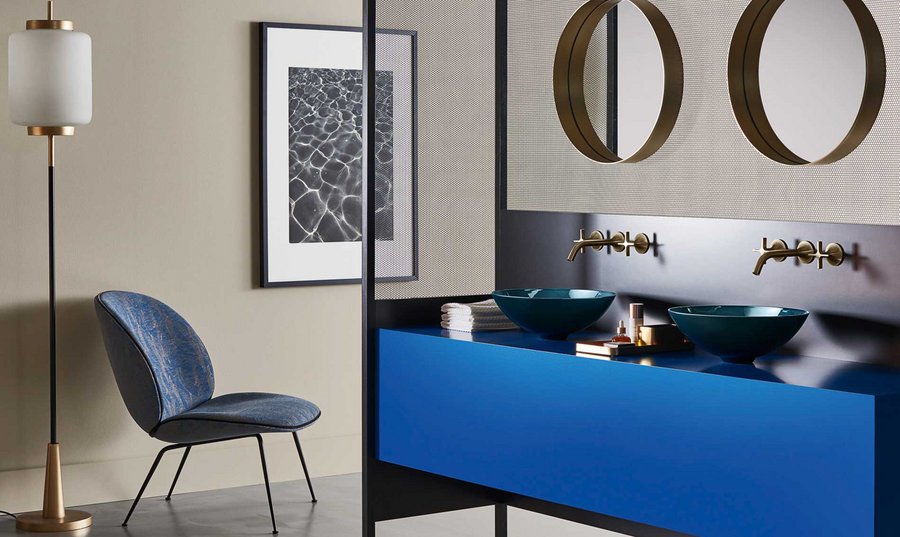
A bathroom designer or architect is a modern storyteller too: the
process of planning or replanning a bathroom with private spa
aspirations is shaped not only by a design concept based on formal and
aesthetic considerations but by a narrative idea as well.
Photo: Alape
Bathroom planner or architects are modern storytellers too. The process
of planning or replanning a bathroom with private spa aspirations is shaped not
only by a design concept based on formal and aesthetic considerations but by a
narrative idea as well. That might mean incorporating a theme that the clients
have a personal connection with, taking the architecture of the house into
account or factoring in the special location of the bathroom (e.g. in direct
proximity to the garden). A family bathroom will look different than a bathroom
for a single person. Are the clients nature lovers who consciously opts for a
sustainable lifestyle? Does colour play an important role in the design of the
bathroom, or are the bathroom users technophile? In a person-to-person
conversation, the bathroom planner determines the client’s personal interests
and bathroom rituals so as to tell a highly individual private spa story.
7. Cosiness in the bathroom: a home-like feel and warmth

Cosiness in the bathroom: the furnishings of a private spa span a
spectrum that ranges from comfortable to cosy. Few other design trends
have had such a major impact on the bathroom over the last 10 years as
the trend towards a home-like ambience.
Photo: burgbad
The furnishings of a private spa span a spectrum that ranges from
comfortable to cosy. Few other design trends have had such a major impact on
the bathroom over the last 10 years as the trend towards a home-like ambience:
warm materials like wood or textiles, furniture, carpets or even decorative
wall coverings and flooring are key components for designing a snug private
spa. Because the humidity in the bathroom is subject to extreme changes, designers
can also turn to imitations and water-resistant materials. Design-oriented
radiators reinforce the overall impression. But even the best plan can’t convey
the impact that a steaming bathtub and pleasant warmth will have on the
client’s perception of the space – only the finished bathroom can do that.
8. Professional lighting design in the bathroom: emotion and function
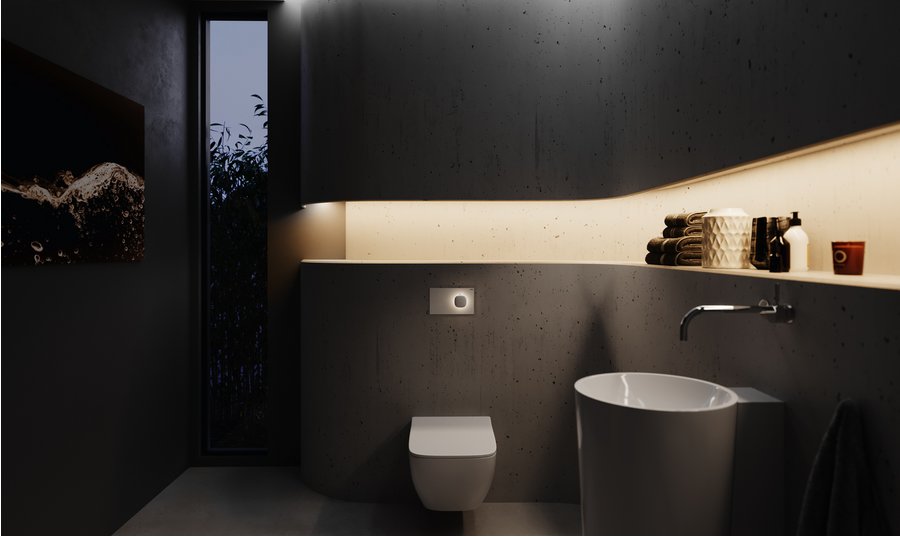
Professional lighting design: a professional lighting design is a must
for creating the conditions needed to enjoy lots of nice personal
moments in the private spa.
Photo: Viega
When it comes to setting the stage for a private spa, lighting is
probably the most important component of all. A professional lighting design is
a must for creating the conditions needed to enjoy lots of nice personal
moments in the bathroom. At the same time, the interaction between natural
light over the course of the day and the artificial lighting plays an important
role. Depending on how the bathroom is being used at any particular time,
either functional or emotional lighting is called for. The lighting design
defines and implements various scenarios, up to and including a night-light. In
order for the private spa to serve its purpose as a retreat that’s a pleasure
to spend time in, it’s essential to ensure that the lighting harmonises with
the bathroom architecture, sanitaryware and specially accentuated objects, such
as an illuminated back panel in the shower or an indirectly lit bathtub.
9. Special extras: innovative bathroom products create added value

Special extras: in front of the wall, innovative products are setting
new standards when it comes to hygiene, safety, comfort, convenience or
smart technology.
Photo: Geberit
The bathroom has been impacted by enormous technical progress in the
last 10 years: planning and installation have been simplified by digital tools
and innovative mounting systems that open up totally new design options. New
technical approaches that can be used in combination with pre-wall installations
permit new architectonic solutions, such as innovative shower drains, storage
options, recesses or mountings for walk-in showers. In front of the wall, modern
products are setting new standards when it comes to hygiene, safety, comfort,
convenience or smart technology. Electrification is advancing all the time,
which is why every new design should include the corresponding wiring for
future retrofits.
10. The grand finale: enhancing the private spa with personalised touches

Personalisation: colour-coordinated decorative items, cosy accessories
or elements with a connection to the client add the perfect finishing
touches to the private spa and turn the handover into a special
occasion.
Photo: burgbad
Once work on the new private spa has been completed, many bathroom
planners are content to ensure it has been swept clean before handing it over. Various
home improvement TV shows demonstrate how to do it better – with a few
well-chosen flourishes. It doesn’t take much to enhance the new bathroom. Colour-coordinated
decorative items, cosy accessories or elements with a connection to the client
add the perfect finishing touches to the private spa and turn the handover into
a special occasion.
Jens J. Wischmann, managing
director of the German Bathroom Sector Association (Vereinigung Deutsche
Sanitärwirtschaft e.V. [VDS]), sees the ISH digital 2021 as coinciding with a
further growth spurt for the holistic philosophy of the private spa: “A time of
crisis such as we’re experiencing right now naturally gives people a special
reason to see their bathroom as a safe haven and turn it into a private spa. But that’s not their main
motivation. The growing desire for a private spa is in fact a long-term development
that’s causing the bathroom to play an increasingly significant role within the
hierarchy of rooms in the home. That’s why I would appeal to the architects who
design tomorrow’s housing to make bathrooms bigger in future!”
The room concepts the bathroom sector has developed for this modern
bathroom culture exhibit a great many different elements – including e.g.
cosiness, differentiated functions, the staging of water or rainfall showers. Taken
individually, there’s nothing revolutionary about any of them. Combined in a
meaningful way, however, they add up to an innovative, ambitious type of bathroom: the private spa.
